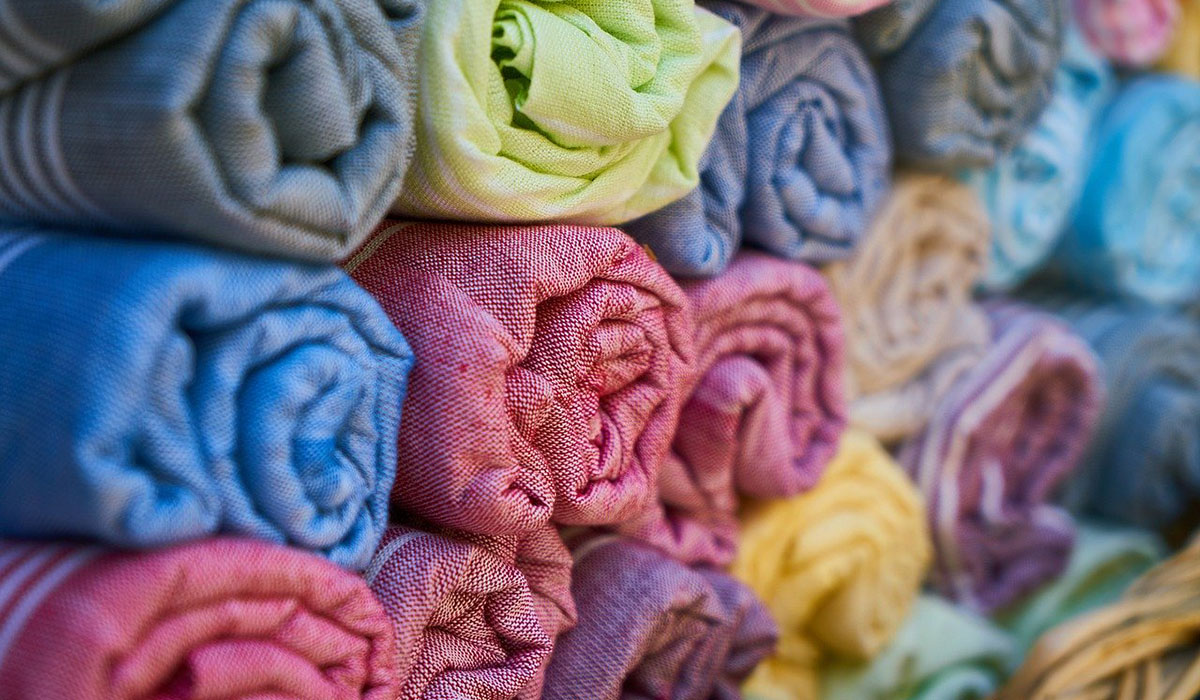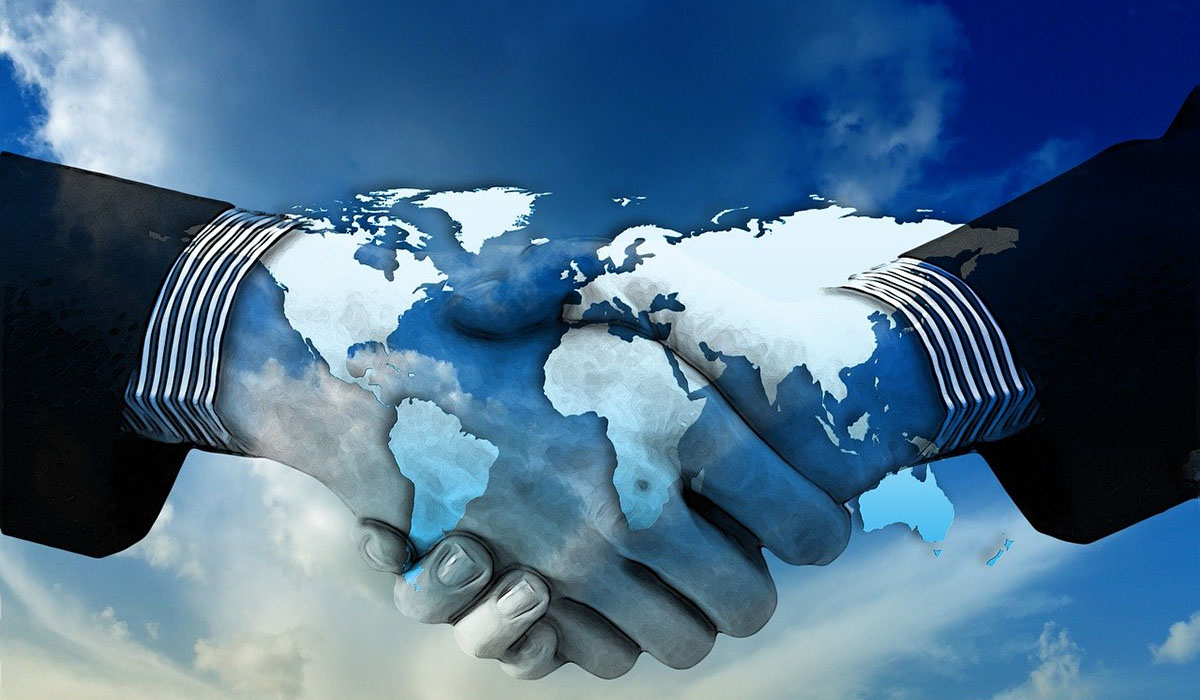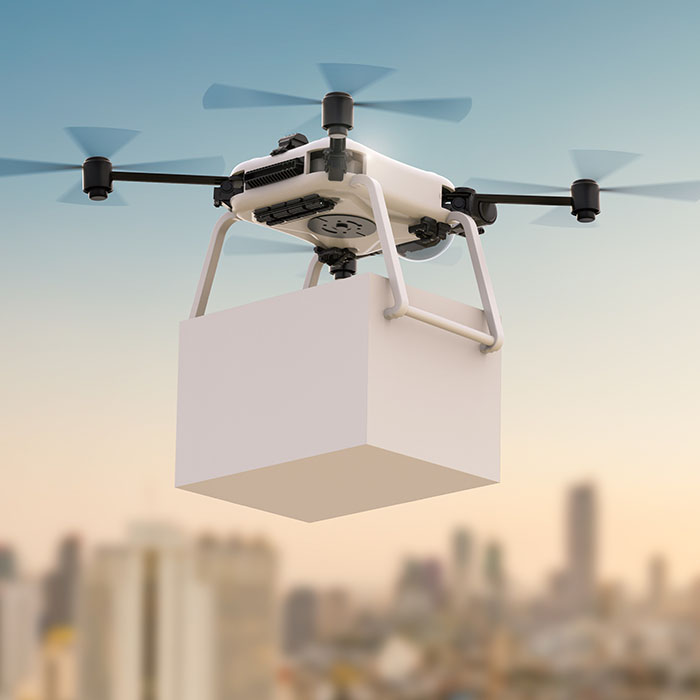May 26, 2020
Textile Industry Ready for an “After Corona” World

Noboru Mori
Executive Managing Director
Japan Textiles Importers Association
How is the textile industry handling the impact of the coronavirus?
When the novel coronavirus infection was spreading in China, and Wuhan and many other areas were in lockdown, it was still possible for apparel imports from China to pass through customs clearances and other procedures at ports and airports. The problem was logistics, because the lockdown closed rail lines and caused shortages of truck drivers. Even if the factories were ready to ship products, they couldn’t actually ship them, or if they did, the reduction of freight services caused delivery delays. After the lockdown was lifted in China, and factories started working, economic activity was still at a halt in Japan and Western and Asian countries, making it impossible to supply those countries with apparel and other finished products from China, and with fabric and other raw materials.Countries are now resuming economic activity, but Japan is still under the state of emergency*. We can receive spring and summer apparel made overseas, but we are losing sales opportunities due to stores staying closed. The government has been promoting the use of e-commerce and online sales, but from reports it seems that results have not been good.
*The declaration of emergency was fully revoked on May 25th, 2020.
From January this year, the market had completely lost speed, beset by general consumption leveling off at the end of 2018, unease about the future the decelerating economy, declining motivation to spend, irregular climate, and market conditions worsened by the consumption tax increase. The novel coronavirus added another blow to that situation, and we hear that the impact on trade will continue to the first half of 2021, or perhaps even longer.
In these ways, the novel coronavirus has revealed a range of risks. We will consider the combination of factory locations in Japan and nearby countries, alternative logistical methods, prudent selection of production sites, and other aspects of our thinking on supply chains. While we will not be radically changing the logistical flow from China and other Asian countries, we appear to need further dispersion in our procurement from Japan and neighboring regions.
As for exports of textile goods from Japan, I gather that textile-related think tanks are hurrying to develop online matching platforms, because it is not possible to operate the major overseas trade shows. We are also looking for new forms of business, such as enlisting the cooperation of forwarders to circulate goods for presentation at overseas trade shows to major US and European customers.
In January, the Japan Textile Federation has announced its “New Design 2030” declaration of the to-be form of the textile industry in 2030. The goals are to take the size of Japan’s apparel market in 2030, including Asian markets, to JPY14 trillion (from JPY10 trillion now, and the value of domestic apparel shipments to JPY2 trillion (now JPY1 trillion). Will the coronavirus necessitate revision of those target values?
I believe Japanese industries in general, not just the textile industry, have sustained major damage. Some reports of GDP bulletin values put the annualized growth rate at minus 3.4% in January through March, and predict minus 21.33% in April through June. That surpasses the lost 20 years after the bursting of the Bubble economy, and even the Lehman Shock. The situation with the novel coronavirus is that China, Europe, the USA, and now Japan have started to resume economic activity, but my personal opinion is that it will be necessary to reconsider the goal of doubling the value of domestic apparel shipments to JPY2 trillion within 10 years. On May 15th, an apparel company listed on the First Section of the Tokyo Stock Exchange went bankrupt, hit by closure under the state of emergency, and more such cases are expected.According to “Movements in Apparel Production, Imports and Exports (woven garments + woven underwear + knit garments + knit underwear) in 2018”, which was compiled by your association, the import penetration rate rose 0.1 point from the preceding year’s 97.6%, to 97.7%. The Japanese market for apparel products is almost entirely occupied by imports, and Japanese-made items are rarities. Do you see any possibility that the coronavirus effect could cause a partial shift of overseas production to Japan?
As I said, we are changing our approach to supply chains, and in that process, the question of how to raise added value if we produce in Japan appears to be a key point. Today’s young people, influenced by environmental education, are emphasizing care for the global environment, and it appears likely that the sustainable ideas of ethical and green consumption, which refrain from buying unneeded items, will become the norm. Highly-functional materials and ecological goods are being developed to satisfy that demand. In the supply of products, we are thinking of meeting the preferences of such consumers with products that have added value in the forms of personalization and customization. Such products would be made in Japan.
What kinds of measures and policies are your member companies adopting for the transition from “after coronavirus” to “with coronavirus”? What kinds of liaison will there be between your member companies?
1) Member companies’ actions to prevent novel coronavirus infection
From before the state of emergency was declared, companies able to use teleworking have adopted measures such as having jobs which can be entirely done from home work that way in shifts, using greatly staggered or shifted working hours to avoid crowded commutes, and using teleconferencing to refrain from business travel and meetings with clients.
When working from home is used, there are still differences between companies, but some have switched from strict prohibition of taking laptop PCs outside, to avoid leaks of confidential information, to allowing them to be taken out in combination with information sharing and security management from their own servers. That allows use of internal laptops from home as well. New cellphones are being provided for work at home, as well as support for data communications at home (provision of Wi-Fi routers). For we companies which trade internationally, it is not possible to do all the work of departments such as management and logistics fully from home, so people have to go to work.
We hear from many companies that teleworking is going relatively well. They use free or cheap applications for teleconferencing, and they can have meetings with external customers without delay, so increasing numbers of companies are considering introducing telework, and I think that will continue in future.
2) Liaison between members companiesWhen working from home is used, there are still differences between companies, but some have switched from strict prohibition of taking laptop PCs outside, to avoid leaks of confidential information, to allowing them to be taken out in combination with information sharing and security management from their own servers. That allows use of internal laptops from home as well. New cellphones are being provided for work at home, as well as support for data communications at home (provision of Wi-Fi routers). For we companies which trade internationally, it is not possible to do all the work of departments such as management and logistics fully from home, so people have to go to work.
We hear from many companies that teleworking is going relatively well. They use free or cheap applications for teleconferencing, and they can have meetings with external customers without delay, so increasing numbers of companies are considering introducing telework, and I think that will continue in future.
Consumption of textiles in Japan is stagnating at present, and in this environment of low birth rate, aging population, and population decline, there will not be much demand as before in the medium to long-term. However, global population is rising, and demand for textile goods is expected to expand. Companies are looking to make the Japanese market central, while looking to US, European, and Asian markets.
In China, the largest supplier of imports of textile goods, labor and other costs are rising, and there is a trend to move the production of textile goods from China to ASEAN countries. China retains its position as a key supplier country, for reasons such as delivery times, materials background, and support for products of high added value. On the other hand, ASEAN countries and others such as Bangladesh continue to expand as import suppliers, using EPA and LDC preferential tariff systems in addition to their cost advantages.
We also need to apply IoT, AI, Big Data, and other technologies, to thoroughly raise productivity and manage inventory, to efficiently supply stores, use e-commerce, and other measures, while also tacking business with CSR based on sustainability and the SDGs.
In this kind of environment, the emergence of the novel coronavirus is forcing our member companies to change how they do business. In the area of trade systems, Japanese authorities are working towards earlier starts for EPAs and RCEPs that are currently being negotiated between Japan, China, and South Korea, as well as improving the import/export environment through measures such as simplified procedures for existing EPAs. We are working to help members with efficient and effective measures adapted to their needs. These include addressing their common issues, such as applying CSR in Japan and overseas, including in production countries; collecting, analyzing, and disseminating information; organizing various seminars and training sessions; and reinforcing their outreach operations for exchange among members and with relevant external bodies.
In China, the largest supplier of imports of textile goods, labor and other costs are rising, and there is a trend to move the production of textile goods from China to ASEAN countries. China retains its position as a key supplier country, for reasons such as delivery times, materials background, and support for products of high added value. On the other hand, ASEAN countries and others such as Bangladesh continue to expand as import suppliers, using EPA and LDC preferential tariff systems in addition to their cost advantages.
We also need to apply IoT, AI, Big Data, and other technologies, to thoroughly raise productivity and manage inventory, to efficiently supply stores, use e-commerce, and other measures, while also tacking business with CSR based on sustainability and the SDGs.
In this kind of environment, the emergence of the novel coronavirus is forcing our member companies to change how they do business. In the area of trade systems, Japanese authorities are working towards earlier starts for EPAs and RCEPs that are currently being negotiated between Japan, China, and South Korea, as well as improving the import/export environment through measures such as simplified procedures for existing EPAs. We are working to help members with efficient and effective measures adapted to their needs. These include addressing their common issues, such as applying CSR in Japan and overseas, including in production countries; collecting, analyzing, and disseminating information; organizing various seminars and training sessions; and reinforcing their outreach operations for exchange among members and with relevant external bodies.
The Japan-EU EPA has been in effect since February last year. Japan is supposed to eliminate customs tariffs on around 94% of categories, and the EU on around 99%, but what have results so far been like, and what issues are there for the future?
This February marked one year since the Japan-EU EPA came into effect. Related Japanese authorities reported a few months after it came into effect that the usage rate was rather low. We have identified the issues which cause non-application of the EPA, and have reported as follows to the relevant authorities, calling for improvements:
1. State of Usage of the Japan-EU EPA
2. Reasons why usage of the Japan-EU EPA is not progressing (comments from importers)
(1) Risks of denial and taxation through verification after the fact
On August 1st 2019, customs authorities re-publicized the simplification of some tariff procedures at the import declaration stage, and the explanation (documentation) of the origin of freight to be submitted to them with import declarations. At present, they state that for statements (documentation) that products satisfy requirements for application of special treatment under the Japan-EU EPA, “in the case of self-reporting by the exporter, the importer submits to customs the range if information which can be provided”, and “Submission to customs of explanations (documentation) is not mandatory for those which cannot be obtained”. As such, it is not necessary at the import declaration stage to disclose information which cannot be obtained from the exporter or producer for reasons such as trade secrets.
However, if the disclosure of such explanation (documentation) is demanded in follow-up verification (investigation), it would be necessary to disclose adequate information to confirm local origin of the goods. If information (documentation) sufficient to satisfy these demands is not available, the application of preferential tariffs will be denied, leaving the importer with tax liability, additional taxes, and the like.
Even if they are not obliged to disclose information at the import declaration stage that they cannot obtain from the exporter or producer, importers who bear taxation risks if they are denied special treatment in follow-up verification are still obliged to avoid using the EPA because of the size of the risk if they cannot obtain adequate information for customs authorities to confirm the local origin of the product. As such, it does not appear that the level of usage of this EPA will rise much in future.
(2) The difficulty of obtaining information (documentation) to prove that goods are of local originHowever, if the disclosure of such explanation (documentation) is demanded in follow-up verification (investigation), it would be necessary to disclose adequate information to confirm local origin of the goods. If information (documentation) sufficient to satisfy these demands is not available, the application of preferential tariffs will be denied, leaving the importer with tax liability, additional taxes, and the like.
Even if they are not obliged to disclose information at the import declaration stage that they cannot obtain from the exporter or producer, importers who bear taxation risks if they are denied special treatment in follow-up verification are still obliged to avoid using the EPA because of the size of the risk if they cannot obtain adequate information for customs authorities to confirm the local origin of the product. As such, it does not appear that the level of usage of this EPA will rise much in future.
This kind of taxation risk on importers is not limited to the Japan-EU EPA. The same thing occurs in other agreements which adopt conventional third-party verification systems, but the problem here is that in the Japan-EU EPA, it is not possible to obtain statements (documentation) of satisfaction of requirements for special treatment that the importers had already obtained for the same goods under other agreements. In many cases, that leads importers to refrain from using the EPA. The low usage rate of the Japan-EU EPA is certainly not an issue of regulation at the import declaration stage.
When goods of EU origin are imported, contracts commonly state unit prices, such as EUR300 for a jacket or EUR200 for a pair of pants. That differs from transactions such as OEM production in Asia, where the importer keeps track of the background to production. In many cases the importer (trading company) is unable to maintain a grasp of information such as production processes, and the materials and accessories used.
In such a situation, where the importer cannot obtain adequate information about production processes and the materials and accessories etc. from the exporter and producer to prove the local origin of goods, the situation obliges the importer to hesitate to use the EPA, because of the magnitude of the risks of denial and taxation which could be produced by verification after the fact. Exporters and producers on the EU side show little understanding of this situation, and it feels as if they are making it more difficult to obtain the necessary information (documentation).
3. What is required in order to make full use of the Japan-EU EPA (importers’ comments)When goods of EU origin are imported, contracts commonly state unit prices, such as EUR300 for a jacket or EUR200 for a pair of pants. That differs from transactions such as OEM production in Asia, where the importer keeps track of the background to production. In many cases the importer (trading company) is unable to maintain a grasp of information such as production processes, and the materials and accessories used.
In such a situation, where the importer cannot obtain adequate information about production processes and the materials and accessories etc. from the exporter and producer to prove the local origin of goods, the situation obliges the importer to hesitate to use the EPA, because of the magnitude of the risks of denial and taxation which could be produced by verification after the fact. Exporters and producers on the EU side show little understanding of this situation, and it feels as if they are making it more difficult to obtain the necessary information (documentation).
In the current situation, the risks of denial and taxation which could be produced by verification after the fact are the main reason for importers to hesitate to use the Japan-EU EPA. If they are to avoid those risks, importers must be provided with information (documentation) from producers and exporters concerning production processes, and the materials and accessories used, sufficient to prove the local origin of products, and the exporters and producers must understand the risks to the importer.
4. Liaison and cooperation with related agencies on the EU side







